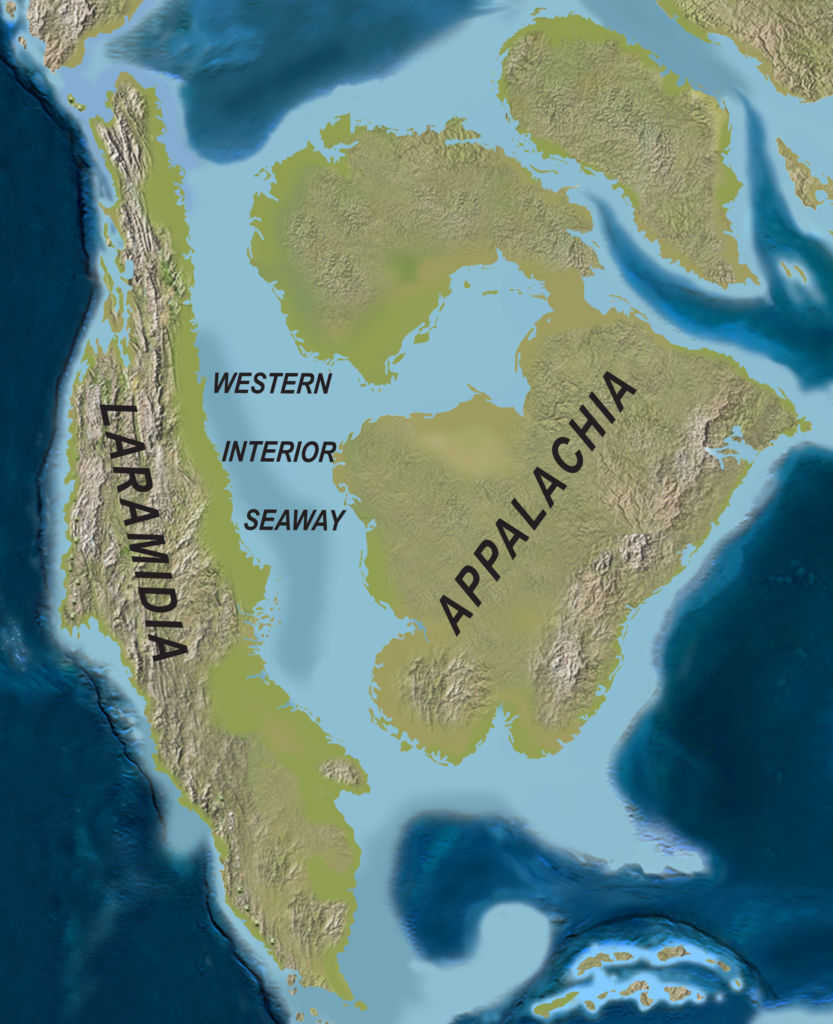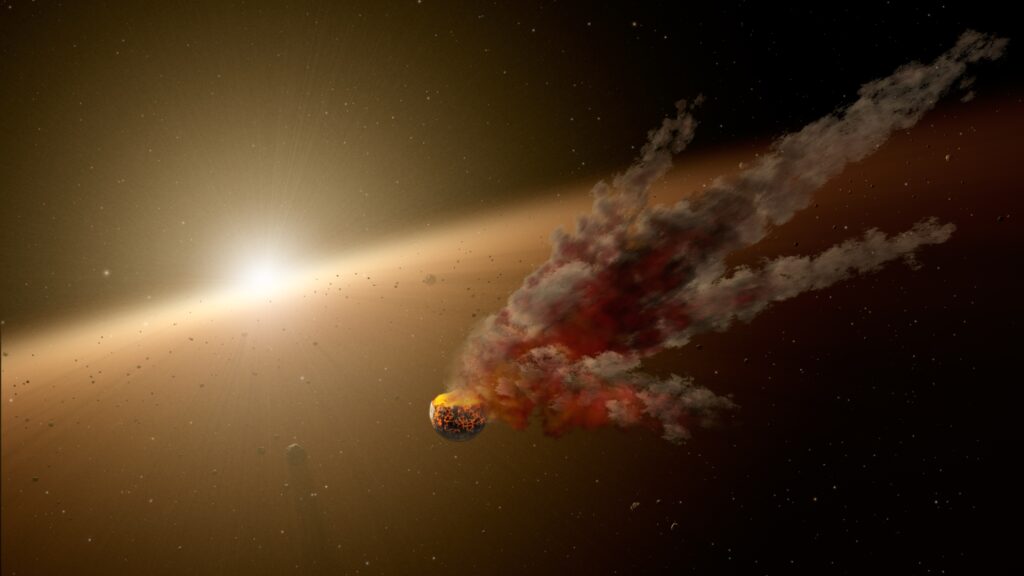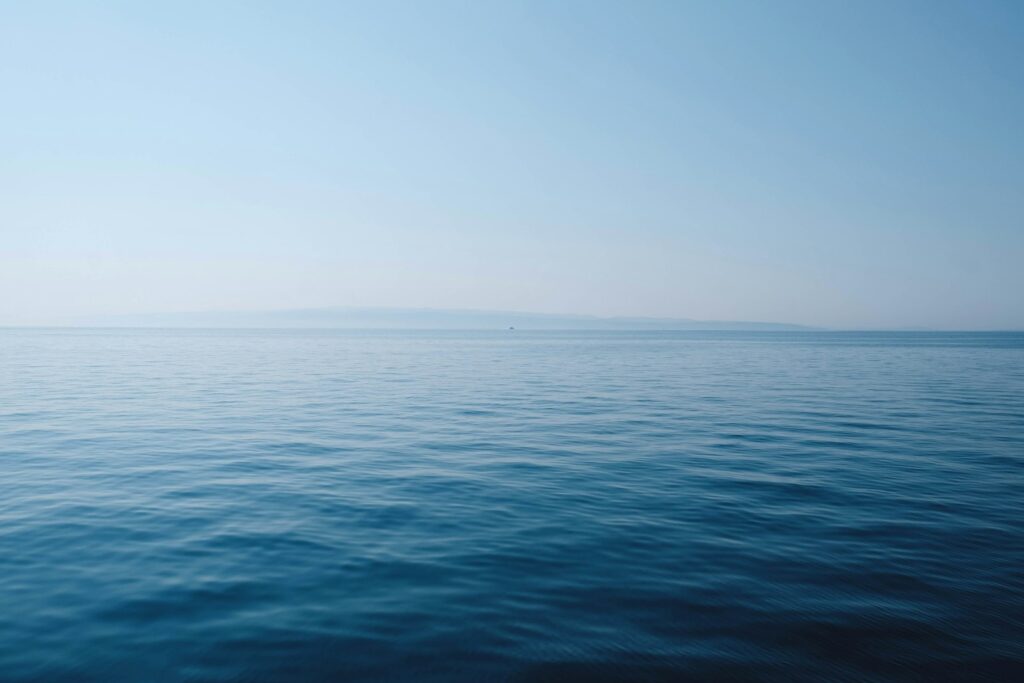Beneath our modern oceans lie the submerged remnants of ancient worlds—vast continental shelves that once hosted diverse ecosystems during the Mesozoic Era (252-66 million years ago). These shallow marine environments, now hidden beneath hundreds of meters of water, were once thriving habitats where prehistoric creatures flourished in warm, sunlit waters. The story of these lost continental shelves provides a fascinating glimpse into Earth’s dynamic past, when continents were configured differently and sea levels fluctuated dramatically. These underwater landscapes represent crucial chapters in our planet’s evolutionary history, preserving the fossil evidence of ancient marine life that developed during the Age of Dinosaurs and helped shape our modern oceans.
The Formation of Mesozoic Continental Shelves

The Mesozoic continental shelves formed through complex geological processes tied to the breakup of the supercontinent Pangaea. As tectonic forces pulled the ancient landmass apart, newly formed continental margins experienced stretching, thinning, and subsidence. This crustal deformation created broad, gently sloping platforms extending from coastlines into shallow seas. Unlike today’s relatively stable continental shelves, these Mesozoic environments were highly dynamic, constantly reshaped by tectonic activity, sediment deposition, and dramatic sea-level changes. The progressive fragmentation of Pangaea throughout the Triassic, Jurassic, and Cretaceous periods produced extensive new shallow marine habitats around emerging continents like North America, Europe, and Africa. These shallow seas became evolutionary laboratories where marine life diversified and thrived in warm, nutrient-rich waters that would eventually become the foundations of today’s submerged continental margins.
Sea Level Fluctuations and Their Impact

The Mesozoic Era witnessed some of the most dramatic sea level changes in Earth’s history, profoundly affecting continental shelf ecosystems. During peak transgressions, especially in the Late Cretaceous, global sea levels stood up to 300 meters higher than today, flooding vast portions of continental interiors and creating extensive epicontinental seas. These sea level fluctuations were driven by multiple factors, including changes in the volume of mid-ocean ridges, high rates of seafloor spreading, and the absence of polar ice caps during this greenhouse climate period. The Western Interior Seaway that divided North America and the Tethys Ocean flooding parts of Europe and North Africa represented massive marine incursions that created enormous shallow shelf environments. As sea levels oscillated, shorelines migrated hundreds of kilometers, forcing marine ecosystems to adapt to changing conditions. These cycles of transgression and regression left behind alternating sequences of marine and terrestrial sediments that geologists use today to reconstruct the complex history of these vanished underwater worlds.
The Tethys Ocean: A Lost Marine Paradise

The Tethys Ocean represents one of the most significant lost marine environments of the Mesozoic Era, stretching between the ancient continents of Laurasia and Gondwana. This vast tropical seaway, spanning from present-day Spain to Southeast Asia, hosted extensive continental shelves with exceptionally diverse marine ecosystems. The warm, shallow waters of the Tethys contained a remarkable variety of environments, from coral reef systems and carbonate platforms to coastal lagoons and estuaries. As the continents continued their dance of separation and collision throughout the Mesozoic, the configuration of the Tethys gradually changed, ultimately closing as Africa and India moved northward toward Eurasia. Today, the remnants of this once-great ocean are preserved in the Mediterranean Sea, Black Sea, and Caspian Sea, while its former continental shelves now form mountain ranges like the Alps, Carpathians, and Himalayas—dramatic evidence of the powerful geological forces that can transform shallow seas into some of Earth’s highest peaks.
The Western Interior Seaway: America’s Flooded Heart

During the Cretaceous Period, North America hosted one of the most remarkable continental shelf environments in Earth’s history—the Western Interior Seaway. This vast epicontinental sea split the continent from the Arctic Ocean to the Gulf of Mexico, creating thousands of kilometers of shallow marine habitat where the Great Plains stand today. At its maximum extent, approximately 90-85 million years ago, this seaway measured about 1,000 kilometers wide and over 3,000 kilometers long, with depths rarely exceeding 200 meters. The warm, nutrient-rich waters supported incredibly diverse ecosystems, from massive marine reptiles like mosasaurs and plesiosaurs to countless invertebrates and early teleost fishes. Extensive deposits of organic-rich black shales found throughout the central United States today indicate that parts of this seaway periodically experienced oxygen-depleted conditions, allowing exceptional fossil preservation. The gradual retreat of this seaway in the late Cretaceous, driven by mountain building in western North America and global sea-level fall, eventually transformed this marine realm back into terrestrial environments, leaving behind a rich geological record of sedimentary rocks that continues to yield important fossils and valuable resources like petroleum and natural gas.
Carbonate Platforms: The Reef Builders

Among the most distinctive features of Mesozoic continental shelves were extensive carbonate platforms—vast accumulations of calcium carbonate sediments created primarily by biological activity. These shallow-water environments formed when colonial organisms like corals, rudist bivalves, and various calcareous algae extracted calcium and carbon from seawater to build their protective structures. Unlike modern coral-dominated reefs, Mesozoic platforms often featured different reef-building organisms, especially during periods following mass extinction events. The Jurassic and Cretaceous periods saw the development of particularly massive carbonate systems, some extending hundreds of kilometers from ancient shorelines. The Great Bahama Bank represents a modern analog for these ancient systems, though many Mesozoic platforms were significantly larger. These biological constructions not only provided habitat for countless marine species but also influenced ocean chemistry, climate, and sedimentation patterns on a global scale. Today, ancient carbonate platforms host some of the world’s most significant petroleum reservoirs, as their porous limestone structures provided ideal conditions for hydrocarbon accumulation and preservation over millions of years.
Evolutionary Cradles: Biodiversity Hotspots

Mesozoic continental shelves served as critical evolutionary laboratories where many modern marine lineages first appeared or underwent significant diversification. These shallow, productive environments provided abundant ecological niches that drove adaptive radiation across numerous taxonomic groups. The relatively stable conditions of continental shelves, compared to both deep ocean and terrestrial environments, allowed for specialized adaptations to develop among marine organisms. The Mesozoic witnessed the evolution and diversification of key marine groups, including modern bony fishes, sharks and rays, numerous crustacean lineages, and various mollusks that continue to dominate marine ecosystems today. Evidence suggests that many evolutionary innovations emerged first in these shallow shelf environments before spreading to deeper waters or more specialized habitats. The ecological complexity of these systems, with their varied substrates, water temperatures, salinities, and current patterns, created selection pressures that favored the development of novel body plans, feeding strategies, and reproductive mechanisms. This biological experimentation on Mesozoic shelves established fundamental ecological relationships and food web structures that continue to influence marine ecosystem function in our modern oceans.
Marine Reptiles: Masters of the Mesozoic Seas

The continental shelves of the Mesozoic Era hosted an extraordinary radiation of marine reptiles that dominated ocean ecosystems for over 180 million years. Unlike the mammals and birds that rule today’s oceans, Mesozoic seas were patrolled by specialized reptilian predators that had returned to aquatic environments from terrestrial ancestors. Ichthyosaurs, with their dolphin-like bodies and massive eyes, became perfectly adapted for hunting in open waters adjacent to continental shelves. Plesiosaurs, with their remarkable four-flipper design and either long necks or massive heads, exploited various niches from coastal waters to deeper shelf environments. Mosasaurs, relatives of modern monitor lizards, rose to prominence in the Late Cretaceous, evolving into massive apex predators exceeding 15 meters in length. These reptilian dynasties underwent multiple diversification events throughout the Mesozoic, creating complex food webs across continental shelf ecosystems. Their fossil remains, often found in sedimentary rocks representing ancient continental shelves, reveal evidence of specialized adaptations for aquatic life, including streamlined bodies, paddle-like limbs, insulating blubber, and viviparity (live birth)—convergent features with modern marine mammals that evolved independently to solve similar environmental challenges.
Ancient Sedimentary Records: Reading the Past

The sedimentary rocks formed on Mesozoic continental shelves provide an invaluable archive of Earth’s past environmental conditions, biological communities, and geological processes. These deposits, often hundreds or thousands of meters thick, represent the accumulated debris from millions of years of biological activity, weathering, erosion, and deposition. Distinct layers within these sedimentary sequences record changes in sea level, climate fluctuations, oceanic oxygen conditions, and biological productivity across geological time scales. Scientists use multiple analytical techniques to extract information from these ancient sediments, including micropaleontology to study minute fossil remains, geochemical analysis to determine ancient ocean temperatures and chemistry, and sequence stratigraphy to identify cycles of marine transgression and regression. Particularly valuable are black shale deposits, formed under oxygen-poor conditions, which often preserve exceptional fossils with soft tissues and organic compounds intact. The detailed study of these sedimentary archives allows geologists to reconstruct the ancient geography, oceanography, and ecology of Mesozoic continental shelves with remarkable precision, providing crucial context for understanding both evolutionary history and the dynamics of Earth’s climate system.
Anoxic Events: Crises on the Continental Shelves

The Mesozoic Era witnessed several episodes of widespread ocean oxygen depletion known as Oceanic Anoxic Events (OAEs), which profoundly affected continental shelf ecosystems. These events, particularly prominent during the Jurassic and Cretaceous periods, created harsh conditions where oxygen levels in bottom waters dropped so low that most marine organisms could not survive. The development of these anoxic conditions has been linked to various factors, including intense volcanic activity, accelerated continental weathering delivering excess nutrients to oceans, and greenhouse climate conditions that reduced ocean circulation. Continental shelves were particularly vulnerable to these anoxic conditions due to their restricted circulation patterns and high biological productivity. During major OAEs, vast areas of shelf seabed became virtually uninhabitable, leading to mass mortality events and dramatic shifts in marine community structure. The dark, organic-rich mudstones formed during these events represent significant carbon burial episodes that temporarily removed CO₂ from Earth’s atmosphere, potentially serving as negative feedback mechanisms in the global climate system. Paradoxically, while devastating to contemporary marine life, these anoxic conditions created ideal environments for the preservation of exceptional fossils and the formation of petroleum source rocks that would eventually become major energy resources millions of years later.
Mass Extinctions and Recovery on the Shelves

Continental shelf ecosystems of the Mesozoic experienced multiple catastrophic disruptions during mass extinction events, followed by remarkable episodes of biological recovery and reorganization. The end-Triassic extinction (approximately 201 million years ago) devastated shallow marine communities, particularly reef ecosystems dominated by colonial invertebrates, creating ecological vacancies that would be filled by new organisms during the subsequent Jurassic Period. The end-Cretaceous extinction, triggered by the Chicxulub asteroid impact 66 million years ago, delivered another devastating blow to continental shelf ecosystems, eliminating approximately 70% of marine species, including ammonites, mosasaurs, plesiosaurs, and numerous plankton groups. The patterns of extinction and recovery were not uniform across all shelf environments—areas with different water depths, latitudes, and connections to open oceans experienced varying impacts and recovery trajectories. Fossil evidence from post-extinction shelf deposits reveals that recovery typically progressed through distinct ecological phases, beginning with pioneer species colonizing barren substrates, followed by increasing ecosystem complexity and the gradual establishment of new food webs. These cycles of devastation and renewal represent crucial evolutionary bottlenecks that helped shape the trajectory of marine life through time, ultimately influencing the composition and structure of modern ocean ecosystems.
Cretaceous-Paleogene Boundary: The Great Reset

The Cretaceous-Paleogene (K-Pg) boundary event represents the most recent and well-studied mass extinction affecting Mesozoic continental shelves, marking a profound ecological reset in marine ecosystems. When the Chicxulub asteroid struck the Yucatán Peninsula approximately 66 million years ago, it triggered a cascade of catastrophic effects, including massive tsunamis, global wildfires, acid rain, and a prolonged “impact winter” as dust and aerosols blocked sunlight. Continental shelf environments experienced particularly severe disruptions, with evidence suggesting that the initial impact generated tsunami waves exceeding 100 meters in height that devastated coastal and shallow marine habitats across the Gulf of Mexico and Atlantic basin. The collapse of marine primary productivity due to darkness and ocean acidification caused food webs to collapse from the bottom up, eliminating both specialized and generalist consumers across continental shelves worldwide. Drill cores from ancient shelf sediments show a distinctive clay layer enriched in iridium (an element rare on Earth but common in asteroids) precisely at this boundary, along with impact spherules, shocked minerals, and a dramatic change in fossil assemblages above and below this horizon. The post-impact recovery of continental shelf ecosystems initiated the establishment of modern marine community structures, with mammals replacing reptiles as top predators and new groups of fish, mollusks, and echinoids exploiting ecological niches vacated by extinct Mesozoic organisms.
Modern Analogs: Windows to Lost Worlds

Several present-day environments offer invaluable glimpses into the nature and function of ancient Mesozoic continental shelves, serving as modern analogs for these lost marine worlds. The Great Barrier Reef and other tropical carbonate systems provide insights into the structure and ecology of Mesozoic reef environments, though with significant differences in the dominant reef-building organisms. The Persian Gulf, with its restricted circulation, hypersaline conditions, and carbonate-dominated sedimentation, resembles certain Jurassic and Cretaceous shelf seas in both physical parameters and sedimentary processes. The Sundarbans mangrove forests and delta system of Bangladesh and India illustrate how coastal vegetation interacts with marine environments, similar to deltaic systems that existed along Mesozoic shorelines. Scientists studying these modern environments can observe biological interactions, sedimentation processes, and geochemical cycles in real-time, providing crucial context for interpreting the fossil and sedimentary record of ancient shelves. The comparison between modern analogs and ancient systems also highlights the unique aspects of Mesozoic environments that have no perfect modern counterparts, particularly during periods of extreme greenhouse conditions or unusual paleogeographic configurations. Through careful comparative analysis, researchers continue to refine our understanding of how these lost continental shelves functioned as integrated physical, chemical, and biological systems.
Future Directions in Continental Shelf Paleontology

Research into Mesozoic continental shelves continues to advance rapidly, with new technologies and interdisciplinary approaches yielding unprecedented insights into these ancient environments. High-resolution 3D seismic imaging allows scientists to map buried continental shelf landscapes with remarkable detail, revealing ancient river channels, coastlines, and reef structures preserved beneath hundreds of meters of younger sediments. Advanced geochemical proxies, including compounds preserved in microfossils and sediments, provide increasingly precise reconstructions of ancient ocean temperatures, pH levels, and nutrient conditions across shelf environments. Computational models that integrate biological, geological, and atmospheric data can now simulate the functioning of entire Mesozoic shelf ecosystems, testing hypotheses about environmental change and biological response at multiple scales. The emerging field of ancient DNA analysis holds potential for extracting genetic information from exceptionally preserved Mesozoic fossils, potentially revealing evolutionary relationships that cannot be determined from morphology alone. Community-based science initiatives that engage amateur fossil collectors continue to yield important new specimens from exposed shelf deposits worldwide, democratizing the discovery process. As climate change reshapes our modern continental shelves through sea-level rise, ocean acidification, and warming, understanding how these environments responded to past perturbations becomes increasingly relevant, making the study of Mesozoic shelves not just an academic pursuit but one with practical implications for anticipating future changes in critical marine ecosystems.
Conclusion: Lessons from Submerged Worlds

The lost continental shelves of the Mesozoic Era represent far more than geological curiosities—they provide crucial windows into Earth’s dynamic history and the evolution of marine life over millions of years. These vanished environments, now preserved in sedimentary rocks and fossil assemblages, demonstrate the profound interconnectedness between shifting tectonic plates, sea level changes, and biodiversity patterns. As continents drifted and oceans expanded or receded, these submerged shelves acted as cradles for marine ecosystems, fostering the diversification of ancient life forms. By analyzing their remnants, scientists can trace the rise and fall of species, reconstruct past climates, and better understand the processes that have shaped our planet’s biological and geological legacy.




